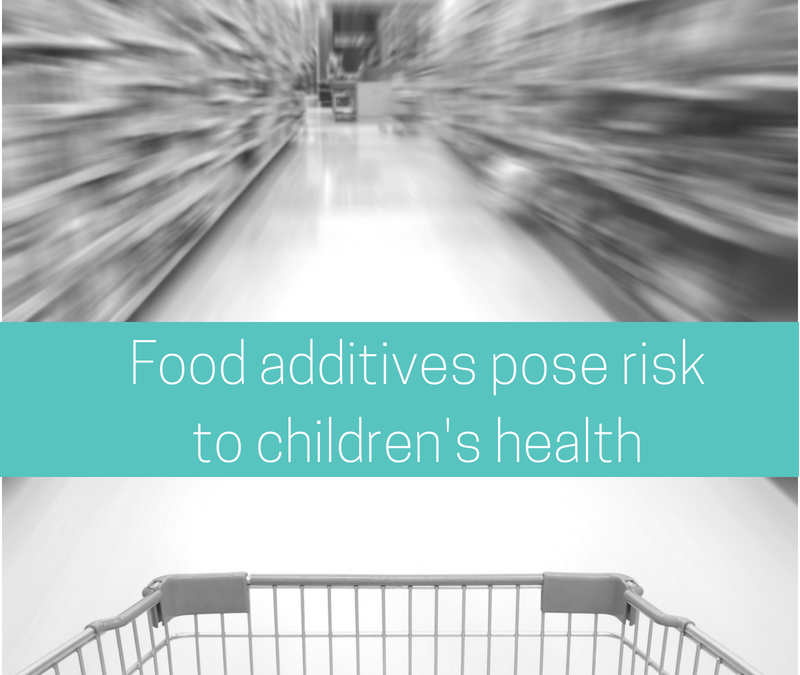Food additives pose risks to children’s health
A new study released by the American Academy of Pediatrics [1] states that food additives may pose health risks to children’s health.
The purpose of the study was to:
– Review child health concerns arising from the use of colourings, flavourings and other chemicals that are deliberately added to our food during food processing. These chemicals are known as food additives.
– To make recommendations that pediatricians might be to use during their pediatric visits
– To propose urgent reforms to the the current regulatory process at the US Food and Drug Administration (FDA)
The study highlighted the following points:
-Regulation of many food additives is inadequate in the US
-The FDA doesn’t have adequate authority to obtain data on chemicals on the market and to be able to reassess their safety for human health.
-“Data about health effects of food additives on infants and children are limited or missing”
-Infants and children are more vulnerable to chemical exposures.
This study calls for:
-Reform to the food additive regulatory system, updating the scientific foundation of the FDA’s safety assessment program
-Retesting previously approved chemicals
-Labelling direct additives with limited or no toxicity data.
Why are kids more susceptible to additives?
Those in the Additive Free Kids community are well aware that kids may be more susceptible to the effects of additives.
Kids have higher relative exposures as compared to adults (due to greater dietary intake per kg). Their detoxification systems are still developing and their key organ systems are still undergoing big changes and maturing. [2]
Which additives impact our children’s health?
The study referred to artificial food colours, nitrates and nitrates impacting our children’s health. Artificial food colours are known to exacerbate attention deficit/hyperactivity disorder symptoms [3] Nitrates and nitrites are known to interfere with thyroid hormone production [4] and may cause cancer causing N-nitroso compounds [5] [6]
Those that have been following Additive Free Kids for some time know that the impact on our children’s health doesn’t stop there. Other impacts can include [8]::
Aggressive behaviour
Allergic reactions
Asthma
Behavioural problems
Depression
Gastrointestinal ailments
Hayfever
Headaches and migraines
Hyperactivity
Learning difficulties
Eczema
Hives
Rashes
Sleep disturbances
Are food additives in the US the same as Australia?
The World Health Organisation maintains an International Numbering System for additives. Some countries may use a letter prefix in front of the number, for example, the European Union, uses an E, and refers to additives as E numbers. Here in Australia we don’t use a prefix. The US uses the same international numbering system without prefixes (with a few minor exceptions).
How are food additives regulated in Australia?
Food additives are regulated by Food Standards Australia New Zealand and the use of food additives in Australia is governed by the Food Standards Code.
An additive must go through a standard application and approval process set by FSANZ.
Manufacturers must provide “new or existing scientific evidence to demonstrate the safety of the additive. This information is evaluated – but not conducted by – FSANZ scientists, and the additive is subsequently allowed or denied” [7]
What is FSANZ’s stance on additives?
We know that some additives are harmful for children’s health, studies have backed this up.
The UK Food Standards Agency funded a study at the University of Southhampton to investigate whether artificial food additives could cause hyperactivity in children. This trial studied 300 kids aged three or eight and the effect on them of colourings and preservatives. Their findings showed that there was a significant increase in ADHD type behaviour in children in both age groups. It was estimated by the researchers that if additives were banned, the 6.6% of children in the UK aged 3 to 12 suffering from ADHD would be reduced by 30%.
As a result of this study, the UK FSA banned six artificial food colours – 102, 124, 110, 122, 104 and 129. These food colourings are considered safe by Australia.
The European Union implemented labelling of these six colours stating “may have an adverse effect on activity and attention in children”
When FSANZ is questioned as to why Australia still has additives that are prohibited in other countries, their response is:
“Different countries have different approval systems. Some countries ban products if they cause DNA changes at any level in any animal…just because something causes cancer in rats and mice doesn’t mean it will cause cancer in humans…” [7]
and
“..all additives permitted in Australia are considered safe whether or not they are banned overseas” [7]
Shortcomings of Australian regulatory approval process
There are a number of shortcomings of our regulatory approval process of additives in Australia, these are:
-Additives can be known to case serious effects at high doses in animal studies, however, they are permitted in small doses in our food and considered as safe
– ‘safe’ levels and acceptable daily intake (ADI) limits are based on a projected average adult intake. There needs to be an ADI for children. Children are more susceptible to the impact of additives compared to adults as they have immature detoxification systems.
– Additives aren’t tested for neurological impacts and the impacts on learning and behaviour. Additives are only tested for major physical changes. “Food scientists estimate that it takes about 30 years to properly monitor and evaluate the effects of a new additive in circulation in the human population. [7]
– FSANZ doesn’t have a monitoring mechanism in place in which adverse reactions to additives can be reported.
– Additives are consumed in combination however they are only tested in isolation.
“It is very easy for the average Australian eating a normal healthy balanced diet to consumer a combination of more than 100 different additives every day.”
A study published in 2005 conducted by the University of Liverpool looked at the impacts of 4 common additives in combination and found that the damage caused by each additive when combined was much greater than the impact of each individual additive.
-FSANZ should ensure there is transparency and public access to information, including potential conflicts of interest.
Time for change
It is time for change. I hope this study from the US Academy of Pediatrics will be a catalyst for the change that the Additive Free Kids community have been championing for a long time!
Let’s hear what you think…. if there is enough support I am happy to approach FSANZ on behalf of the Additive Free Kids community group.

Join our Additive Free Kids Community and be first to know about new research, product reviews, competitions and stay connected
References
[1] http://pediatrics.aappublications.org/content/early/2018/07/19/peds.2018-140
[2] Landrigan PJ, Goldman LR. Children’s vulnerability to toxic chemicals: a challenge and opportunity to strengthen health and environmental policy. Health Aff (Millwood). 2011;30(5):842–850pmid:21543423
[3] Nigg JT, Lewis K, Edinger T, Falk M. Meta-analysis of attention-deficit/hyperactivity disorder or attention-deficit/hyperactivity disorder symptoms, restriction diet, and synthetic food color additives. J Am Acad Child Adolesc Psychiatry. 2012;51(1):86–97.e8pmid:22176942
[4] De Groef B, Decallonne BR, Van der Geyten S, Darras VM, Bouillon R. Perchlorate versus other environmental sodium/iodide symporter inhibitors: potential thyroid-related health effects. Eur J Endocrinol. 2006;155(1):17–25pmid:16793945
[5] IARC Working Group on the Evaluation of Carcinogenic Risks to Humans. IARC monographs on the evaluation of carcinogenic risks to humans. Ingested nitrate and nitrite, and cyanobacterial peptide toxins. IARC Monogr Eval Carcinog Risks Hum. 2010;94:v–vii, 1–412pmid:21141240
[6] Bouvard V, Loomis D, Guyton KZ, et al; International Agency for Research on Cancer Monograph Working Group. Carcinogenicity of consumption of red and processed meat. Lancet Oncol.2015;16(16):1599–1600pmid:26514947
[7] Eady, J Additive Alert: Your Guiden to Safer Shopping, 2018
[8] Statham, W Chemical Maze


 My passion and mission is to work with families to reduce the overwhelm when going additive free. Moving to additive free living can bring back peace, calm and joy to families. I know it's possible and I've experienced it first hand with my 5 boys.
My passion and mission is to work with families to reduce the overwhelm when going additive free. Moving to additive free living can bring back peace, calm and joy to families. I know it's possible and I've experienced it first hand with my 5 boys.




Thanks. Small typo. It was estimated by the researchers that if additives were banned, the 6.6% of children in the UK aged 3 to 12 suffering from ADHD would be reduced by 30%.